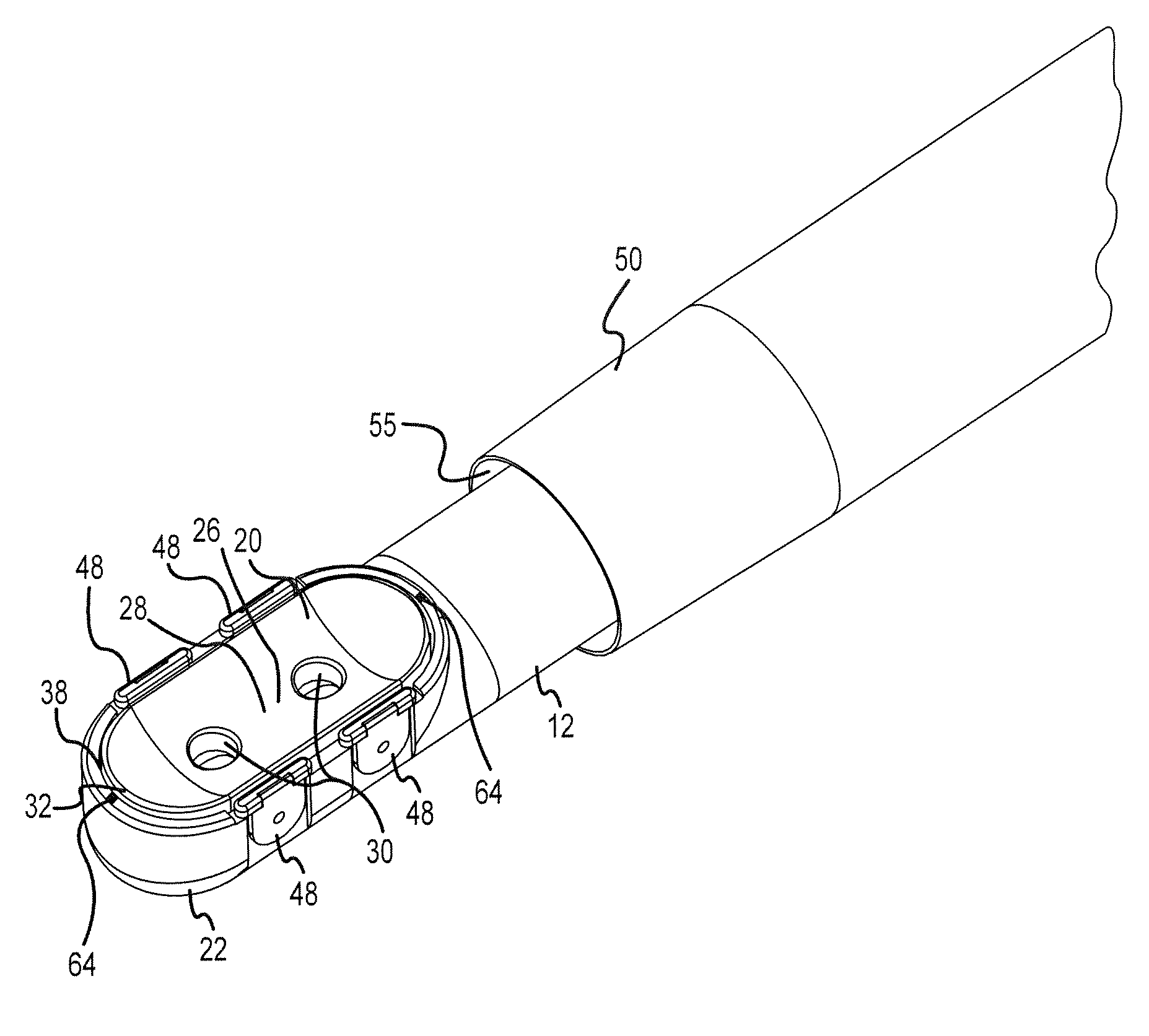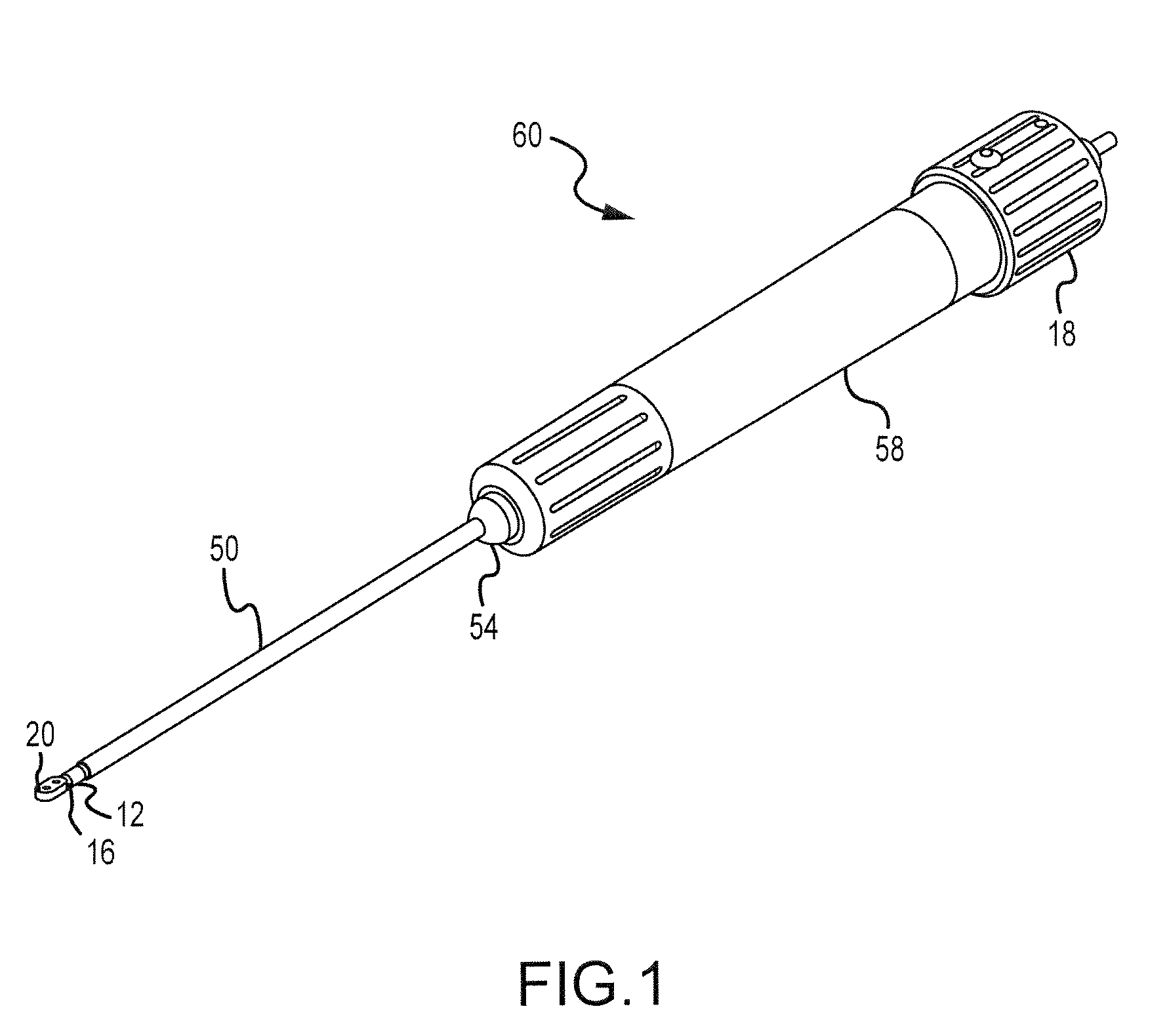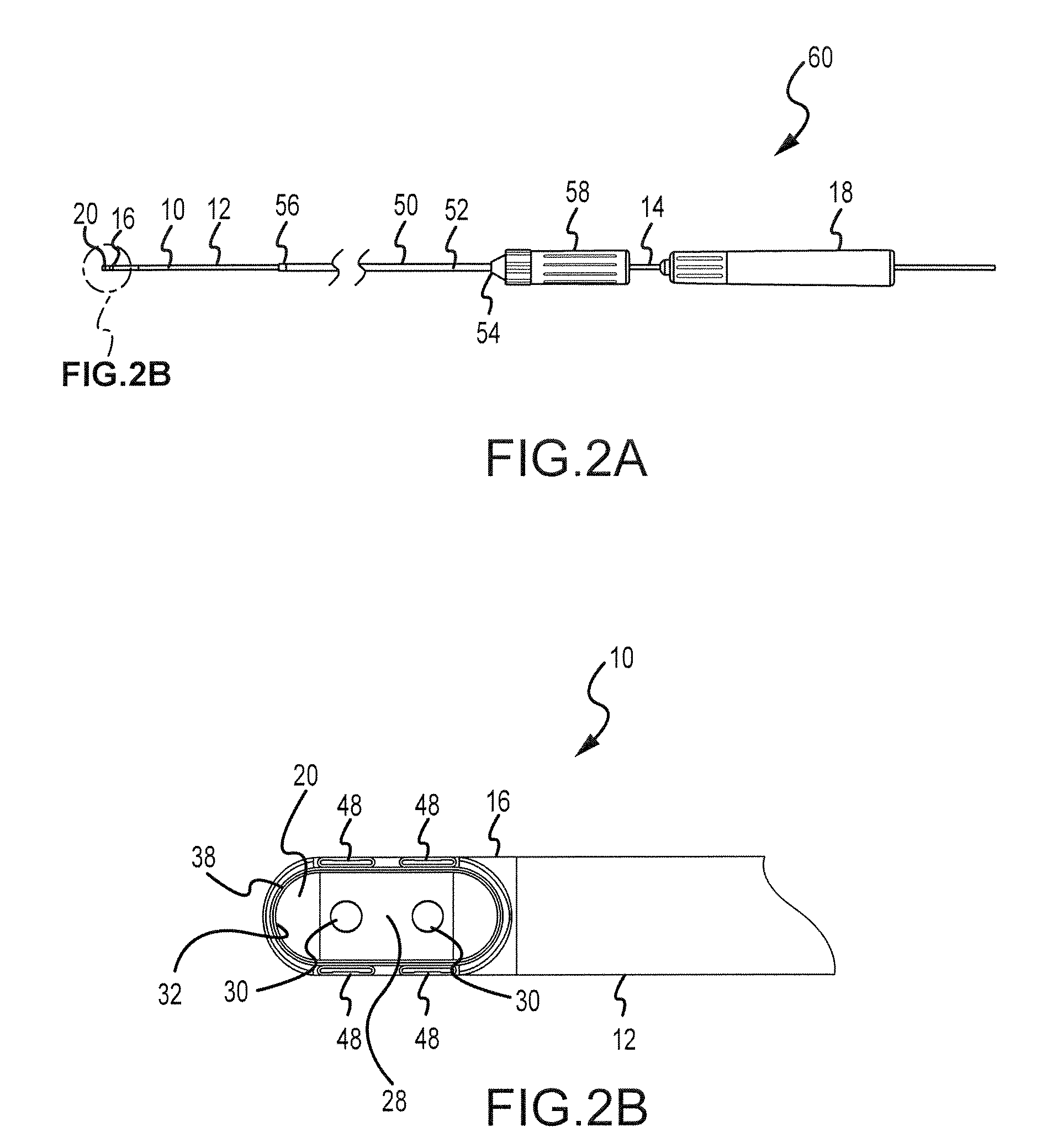Vacuum-Stabilized Ablation System
- Summary
- Abstract
- Description
- Claims
- Application Information
AI Technical Summary
Benefits of technology
Problems solved by technology
Method used
Image
Examples
example
[0069]The following example of methods of use is provided as additional disclosure although the specifics should be generally appreciated by those of skill in the art to which this disclosure pertains.
[0070]A method of ablating epicardial tissue includes providing a guiding catheter, the guiding catheter comprising a body and a continuous lumen extending through the body, a distal end, a proximal portion, and a first handle coupled to the proximal end, and providing an ablation catheter slideably disposed within the lumen of the guiding catheter. The ablation catheter includes an elongate body defining a lumen therethrough, a proximal end, a second handle coupled to the proximal end, a distal portion, and at least one ablating element coupled to the distal portion. The at least one ablating element includes a first surface and a second surface, and the second surface includes a base portion, at least one port and a rim. The ablation catheter further includes at least one cardiac ele...
PUM
 Login to View More
Login to View More Abstract
Description
Claims
Application Information
 Login to View More
Login to View More - R&D
- Intellectual Property
- Life Sciences
- Materials
- Tech Scout
- Unparalleled Data Quality
- Higher Quality Content
- 60% Fewer Hallucinations
Browse by: Latest US Patents, China's latest patents, Technical Efficacy Thesaurus, Application Domain, Technology Topic, Popular Technical Reports.
© 2025 PatSnap. All rights reserved.Legal|Privacy policy|Modern Slavery Act Transparency Statement|Sitemap|About US| Contact US: help@patsnap.com



